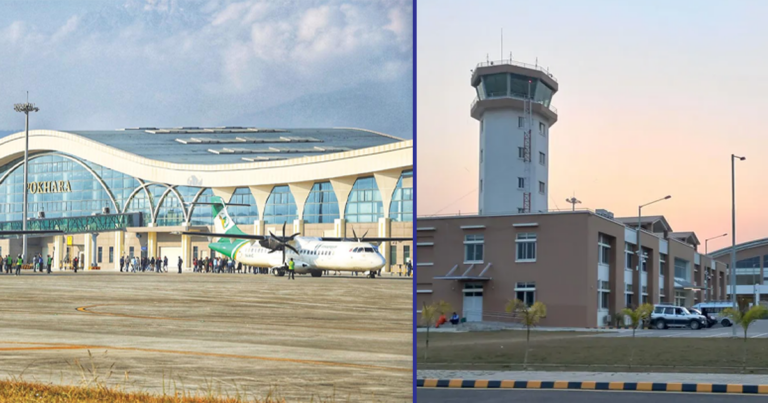Kathmandu: Despite offering extensive discounts and incentives, Nepal’s two newest international airports — Pokhara International Airport and Gautam Buddha International Airport in Bhairahawa — remain without regular international flights.
The government, through the Civil Aviation Authority of Nepal (CAAN) and the Nepal Tourism Board, has waived most fees for international airlines operating from the two facilities. Nepal Airlines Corporation, responsible for ground handling, and the Nepal Oil Corporation, which supplies aviation fuel, have also provided maximum concessions.
International flights from Pokhara and Bhairahawa are exempt from passenger service charges, parking, landing, and navigation fees. The US$ 7 tourism service fee per passenger has been fully waived. Ground handling fees are reduced by 75 percent, and aviation fuel is up to US$ 200 cheaper per kilolitre compared to Kathmandu.
Currently, fuel for international flights is priced at US$ 792 per kilolitre in Pokhara and US$ 776 in Bhairahawa, compared to US$ 973 in Kathmandu. This makes flights from these airports significantly cheaper, offering airlines savings of over Rs 700,000 (approx. US$ 5,300) per flight in combined CAAN and ground handling fees alone.
However, CAAN officials say the lack of flights is not due to insufficient concessions but rather to the government’s failure to provide the same infrastructure and services available at Tribhuvan International Airport in Kathmandu.
Missing facilities include on-site visa, labour, medical, road transport, and public transit services. Additionally, while fees have been waived, the government has not exempted the 13 percent VAT, creating a barrier for airlines.
“The issue is not about discounts,” said CAAN deputy spokesperson Gyanendra Bhul. “If the government continues to ignore essential infrastructure, even offering US$ 2,000 per flight as a reward wouldn’t bring international airlines here.”
Critics accuse the Ministry of Culture, Tourism and Civil Aviation of “playing to the gallery” by issuing press releases reiterating concessions that were already in place since July 2024 under a three-year operational plan. That plan included a 21-point action strategy to improve Nepal’s aviation sector and operationalize the two new airports — but little has been implemented.
Pokhara International Airport began operations on 1 January 2023, while Gautam Buddha International Airport opened on 18 May 2022. Both now handle only domestic flights. Aviation experts say the problem lies in poor marketing and lack of direct international connectivity options, not in the level of discounts.
“Without serious government intervention to market these airports internationally, no amount of fee waivers will work,” the operational plan itself noted.
Until then, the two multimillion-dollar facilities — built to boost tourism and regional connectivity — continue to operate far below capacity, relying solely on domestic traffic.



Comment Here